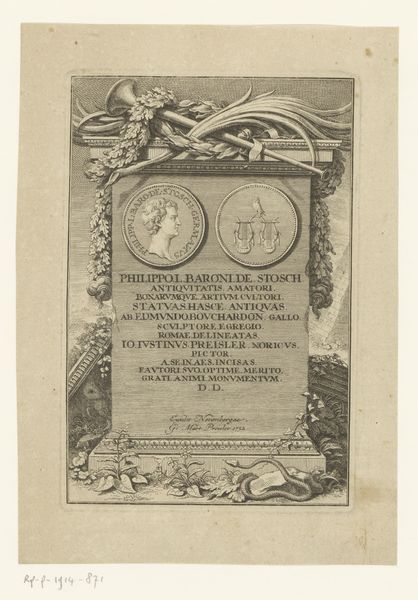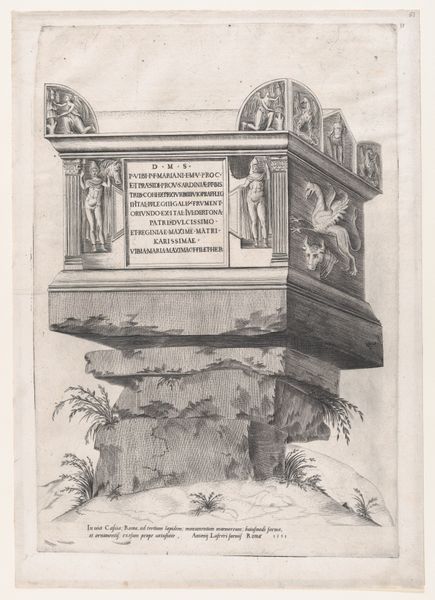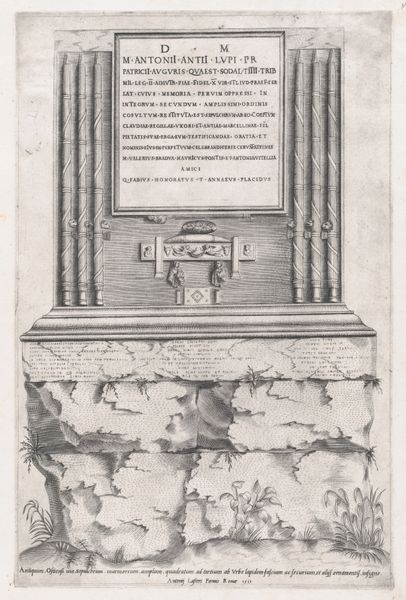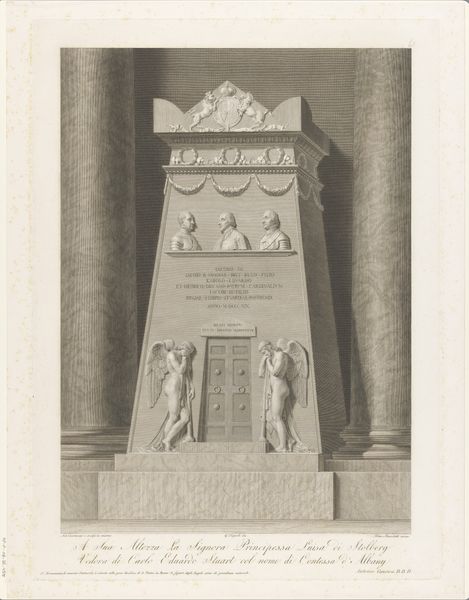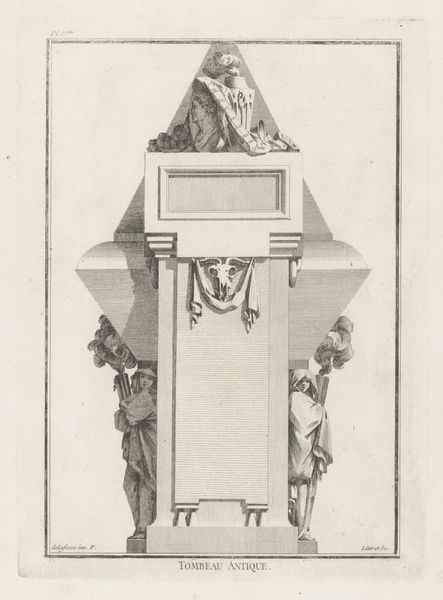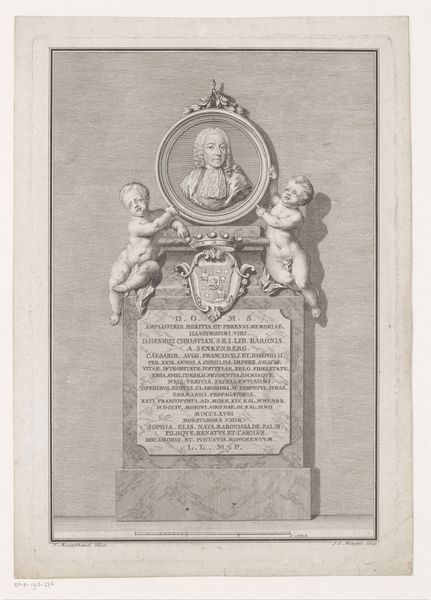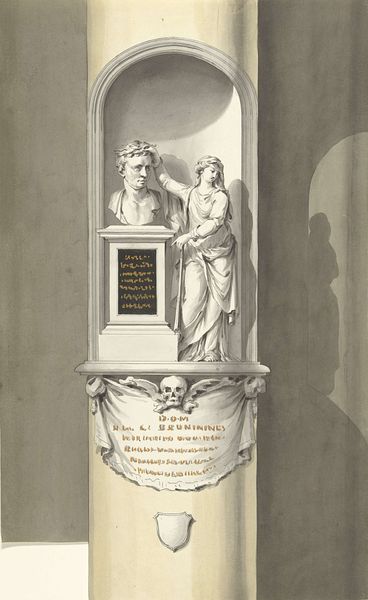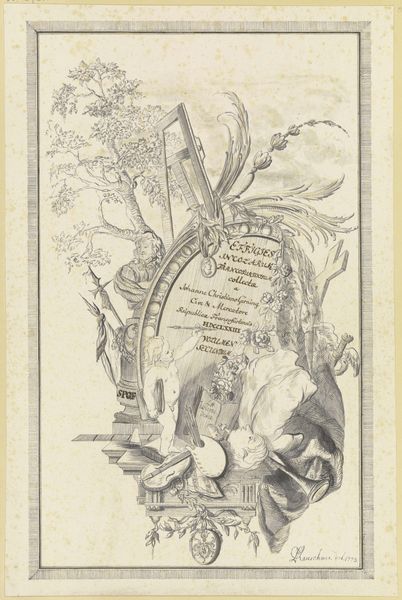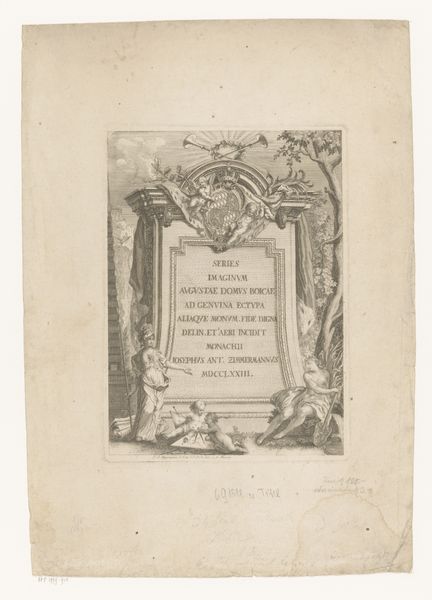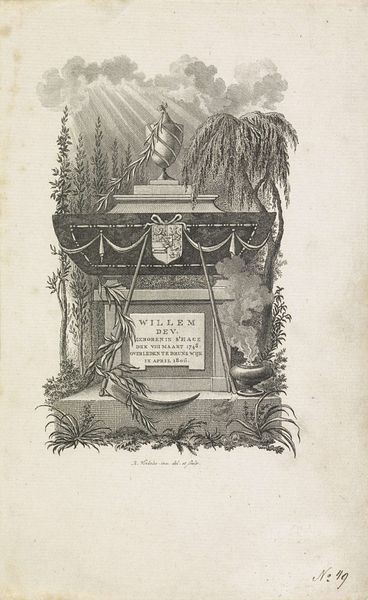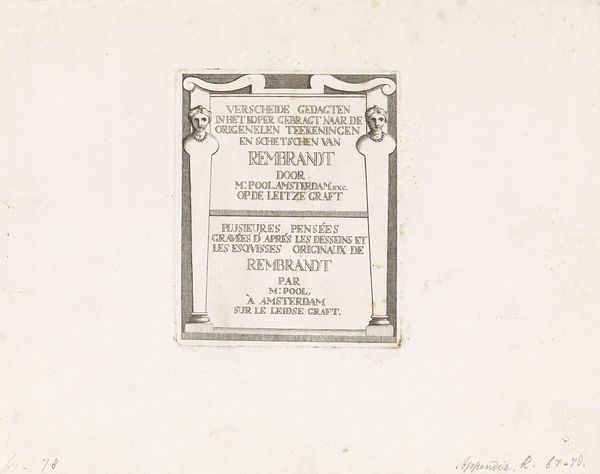
aquatint, print, sculpture
#
portrait
#
aquatint
# print
#
sculpture
#
historical photography
#
sculpture
#
19th century
#
history-painting
Dimensions: 394 mm (height) x 282 mm (width) (bladmaal), 334 mm (height) x 230 mm (width) (plademaal), 290 mm (height) x 182 mm (width) (billedmaal)
Editor: This is "Georg Nielsens gravmæle. Efter Wiedewelt" created sometime between 1748 and 1831, an aquatint by J.F. Clemens. It's quite somber, a sepia-toned print depicting a monument in a wooded setting. I'm immediately drawn to the sculpture at the top, someone engrossed in a book. How do you interpret this work? Curator: Well, the gravestone itself is rich in symbolic weight. Notice the inscription above the figure, "ΓΝΩΘΙ ΣΕΑΥΤΟΝ" – "Know Thyself." This ancient Greek aphorism suggests a focus on introspection and self-understanding, connecting Georg Nielsen to the philosophical traditions of antiquity. Then we see this figure, bent in thought, illuminating the idea of constant seeking of knowledge and truth. It’s a very neoclassical presentation of both grief, memory and ideal. What would it mean for this individual to be celebrated in death by 'knowing thyself'? Editor: So, it's more than just a memorial; it's a statement about Nielsen's character or values? The text below the sculpture must be related to his accomplishments. Curator: Precisely. The Latin phrases speak to Nielsen's dedication to "doctrina," or teaching, and virtues of "modestia." The cumulative effect emphasizes his intellectual contributions and moral qualities as the virtues one should seek in life, preserved here through visual and textual symbols. Editor: I hadn't considered how the image and text work together to build that impression. The connection between 'know thyself' and seeking those virtues – it frames the whole piece differently. Curator: It gives lasting symbolic power, reminding us that images operate within systems of thought. Editor: This has given me a new approach to understanding the cultural implications of the symbolism presented in the image, I didn't consider that these aren't just decorative or identifying elements, but carriers of meaning. Curator: Indeed. An aquatint of the scene adds another layer – it democratized the dissemination of a cultural memory, which at the time would have served the purpose of reinforcing the ideals that society hoped its members to cultivate and remember.
Comments
No comments
Be the first to comment and join the conversation on the ultimate creative platform.
